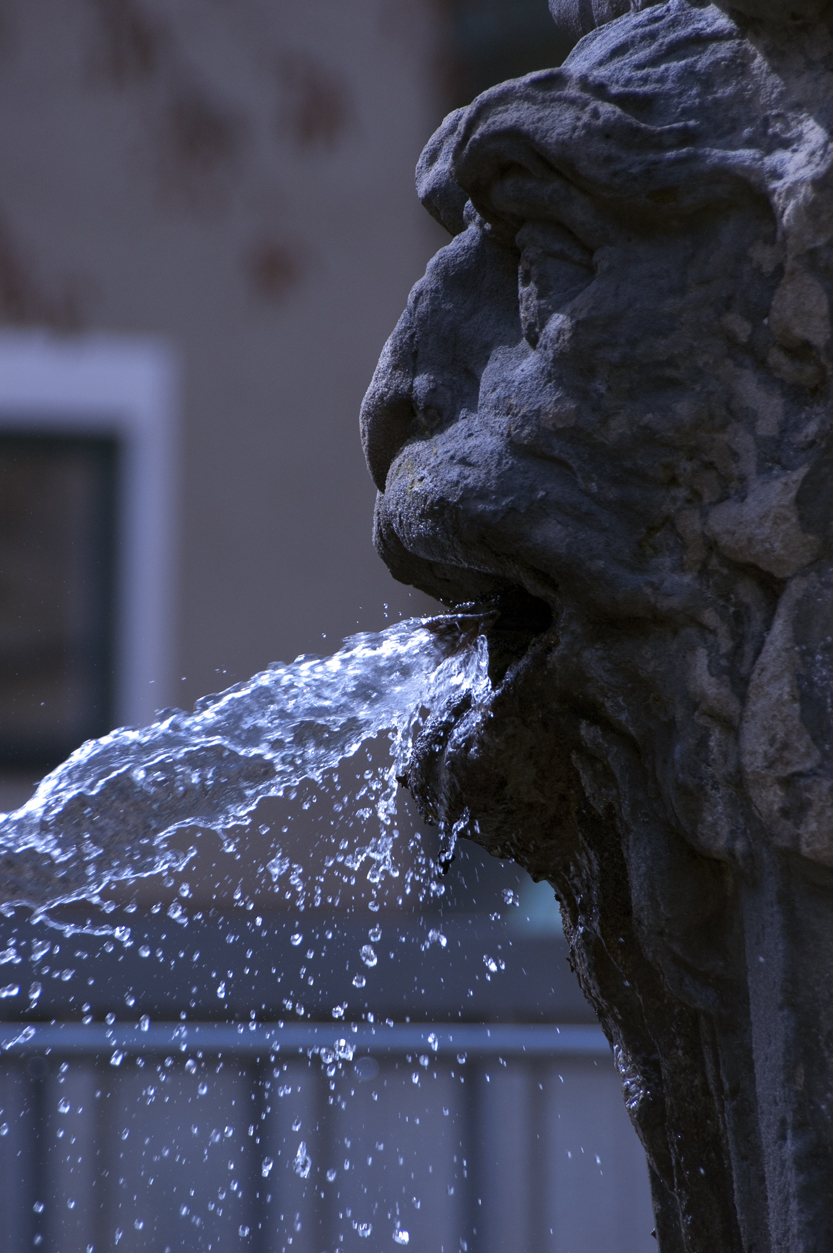With all these stories about Germany, do you have a craving for German food?
You don’t have to go there to get the food!
Get my German cookbook, A Travel for Taste: Germany .
.
It’s a collection of cultural stories and recipes from Germany, with an emphasis on traditional Bavarian cuisine. Even if you don’t cook, the stories are fascinating. Makes a great gift, too!
Click the image below to get yours on Amazon today!
This post was originally published on May 6, 2012, and updated on April 14, 2020.
Come along with me on my daytrip to Bayreuth.
I hopped a train on a Saturday morning in April and settled in for the hour-and-a-half trip. However, it turned out to be a little over two hours because apparently there was some kind of car accident on a railway overpass somewhere along the way. I didn’t mind because I was on a direct train, but some people with connections were hot!
I have to admit I had a little trouble understanding the announcement on the train – all I heard was “delay” and “accident.” I was relieved to read the scrolling notation on the electronic sign on the platform. It was a car accident, not a train crash.
Bayreuth is famous for being the home of composer Richard Wagner who lived from 1813 to 1833. Among other things, he wrote 13 operas, including The Flying Dutchman, Lohengrin, Tristan and Isolde, and Parsifal.
If you still can’t place him, those of my generation will remember Bugs Bunny and Elmer Fudd spoofing some of his work, horned Viking helmet and all. Oh, and Wagner also wrote the music that we now use for the traditional wedding march (“Here comes the bride, big, fat and wide…”).
Composer Franz Lizst also lived in Bayreuth, and Wagner married his daughter Cosima. Bugs actually weighed in on Lizst, too! If it wasn’t for Bugs Bunny cartoons, I’m not sure I’d have made it through Music Appreciation in college.
Wagner was actually born in Leipzig but moved to Bayreuth at the behest of the Margravine Wilhelmine, wife of the Margrave Frederic, the local rulers. Wilhelmine was quite the modern woman and was designated to be the queen of England, except some politics got in the way. She was cultured, educated, refined and beautiful. She brought in famous architects to build herself a new residential palace in town and also to build THE most stunning opera house!
It was this opera house that attracted Wagner to live in Bayreuth. However, turns out his productions were too immense to fit even on the stage of what was the largest opera house in Europe at the time. So, he built his own on a hill just outside of town.
Bayreuth hosts an annual Wagner festival, which is the tip of the iceberg when it comes to its cultural presence. I’d visited there many years ago and vaguely remembered how wonderful it was. And, since all I had were film photos from that visit, I wanted to update my digital inventory with pictures of the Margravine’s opera house and Wagner’s residence.
So, prepared for the historic, baroque city of Bayreuth, I burst out of the train station to be met with a most modern-looking sculpture! I’ve searched and searched online and can’t find anything about the artist or this installation. Reminds me of Keith Haring, though.

On my way to the city center, I saw these beautiful spring flower boxes. If you want advice about the best time to visit Bavaria, come in the spring just after Easter. The Germans set out thousands and thousands of flowers in every available windowbox and planter. FYI: If you come before Easter, the flowers are there, but the beer gardens aren’t open yet.
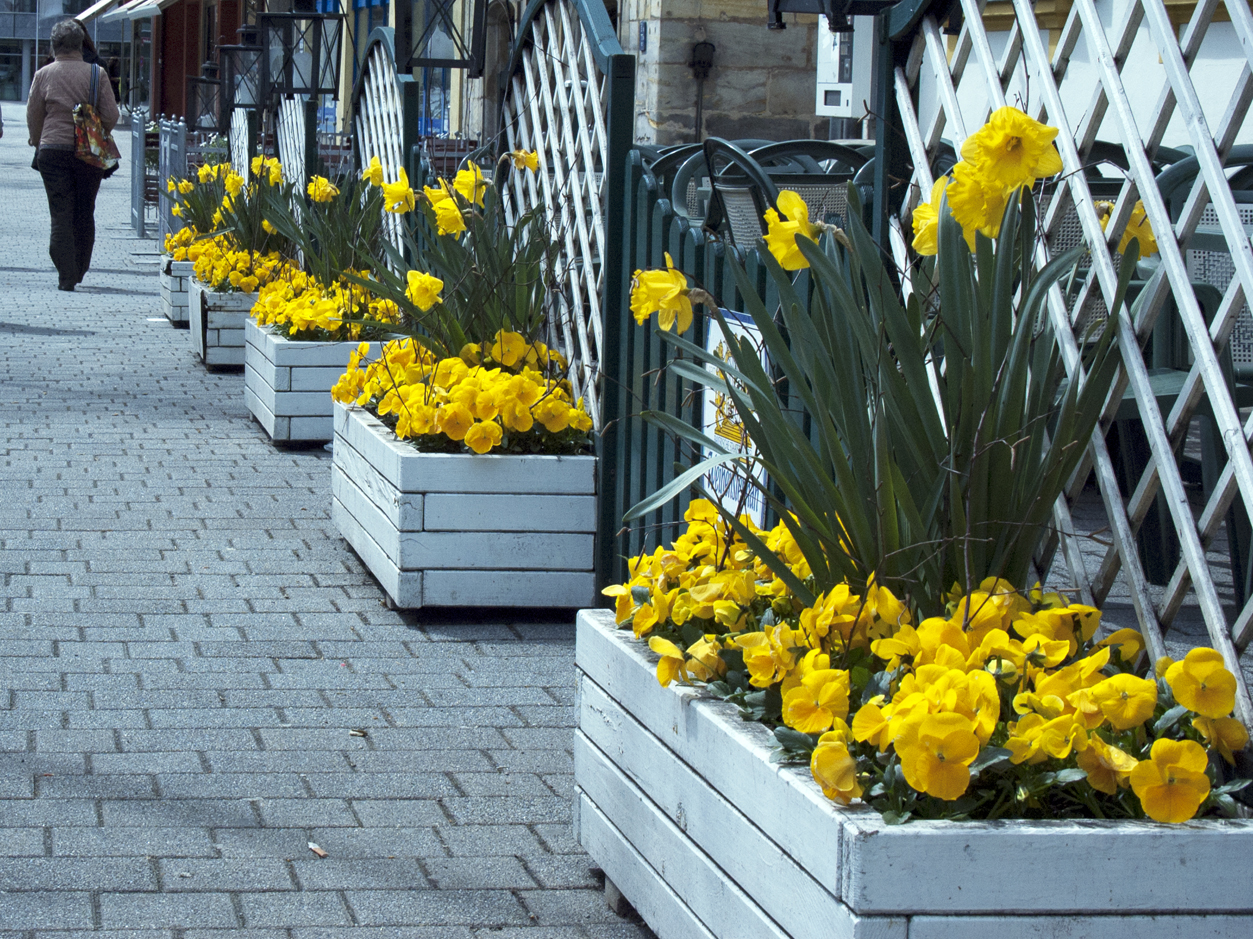
Still not seeing any historical stuff, I saw another modern art installation on my way to the historical part of town. I wasn’t able to determine what exactly this was about, though I walked all the way around it. The photos hanging on the side of the shipping container were aerial views of a shipyard and a highway overpass.

Then I saw a bus swallowing a man:

After the bus had ingested the man, it left and I began to see the historical part of town. This is the back side of the old residential palace: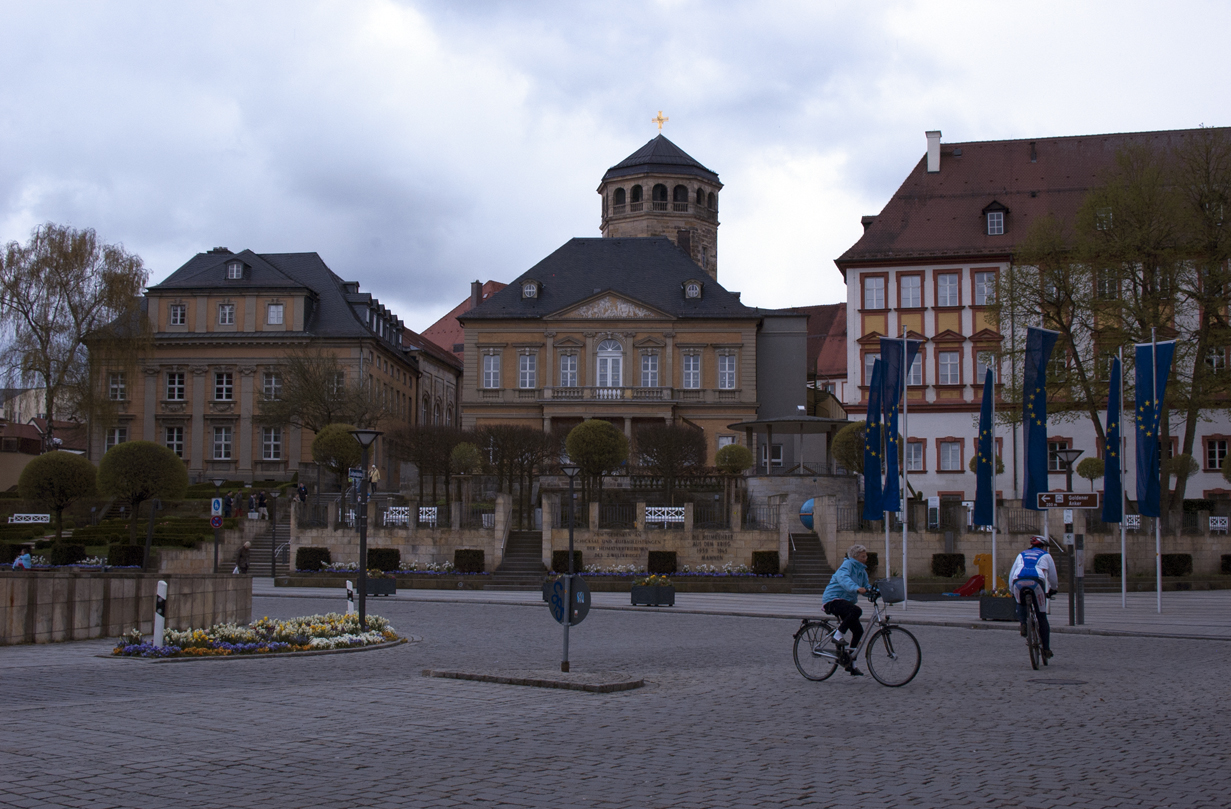
Traveling down the historical old main street, I saw a plastic dinosaur. What baroque European town is complete without one?
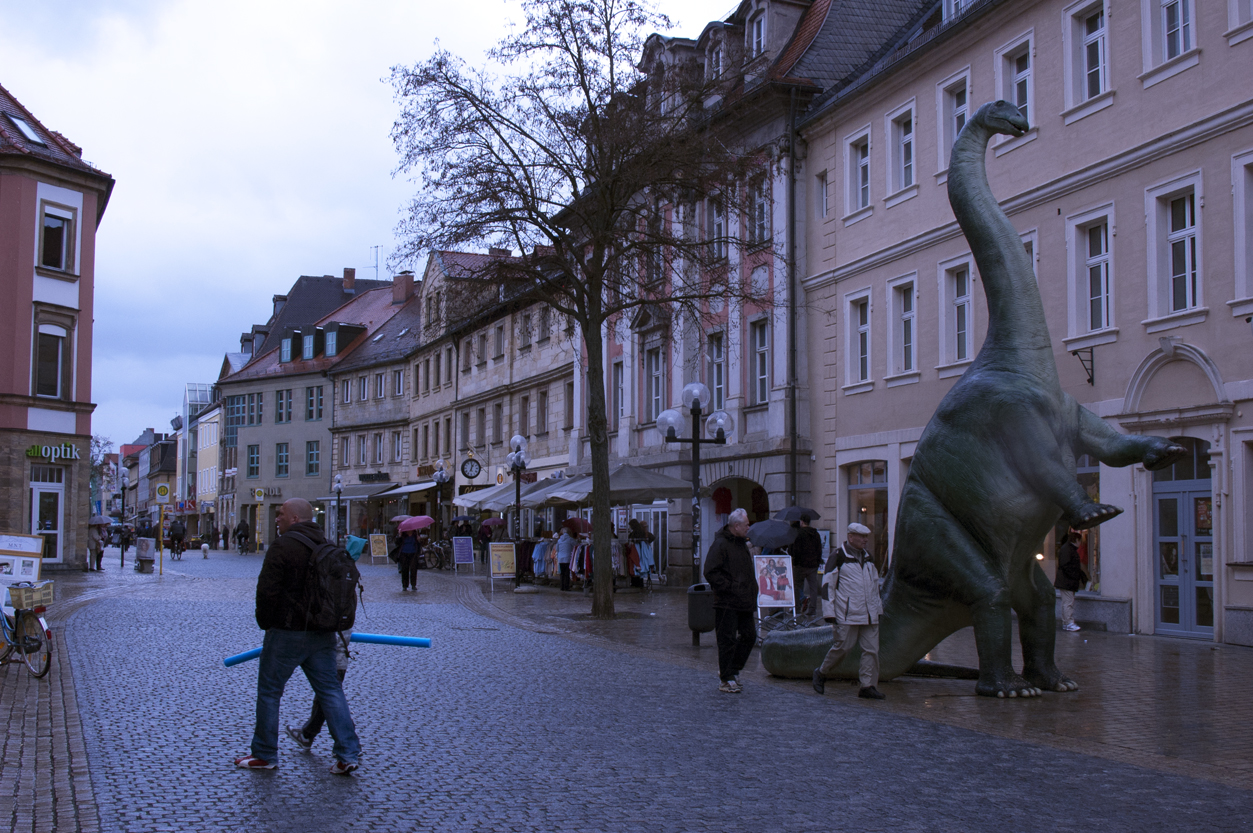
I liked the busts on the front of the old residential palace. The building is built to surround a courtyard on three sides and the busts decorated all three walls. Each face was different, but after a little Internet research I was unable to discover who they were:

Further down the main street were shops, cafes and restaurants. Notice the umbrellas – it was a rainy, April day but not unbearable – yet. And there was a small stream running down the side of the street in its very own channel.
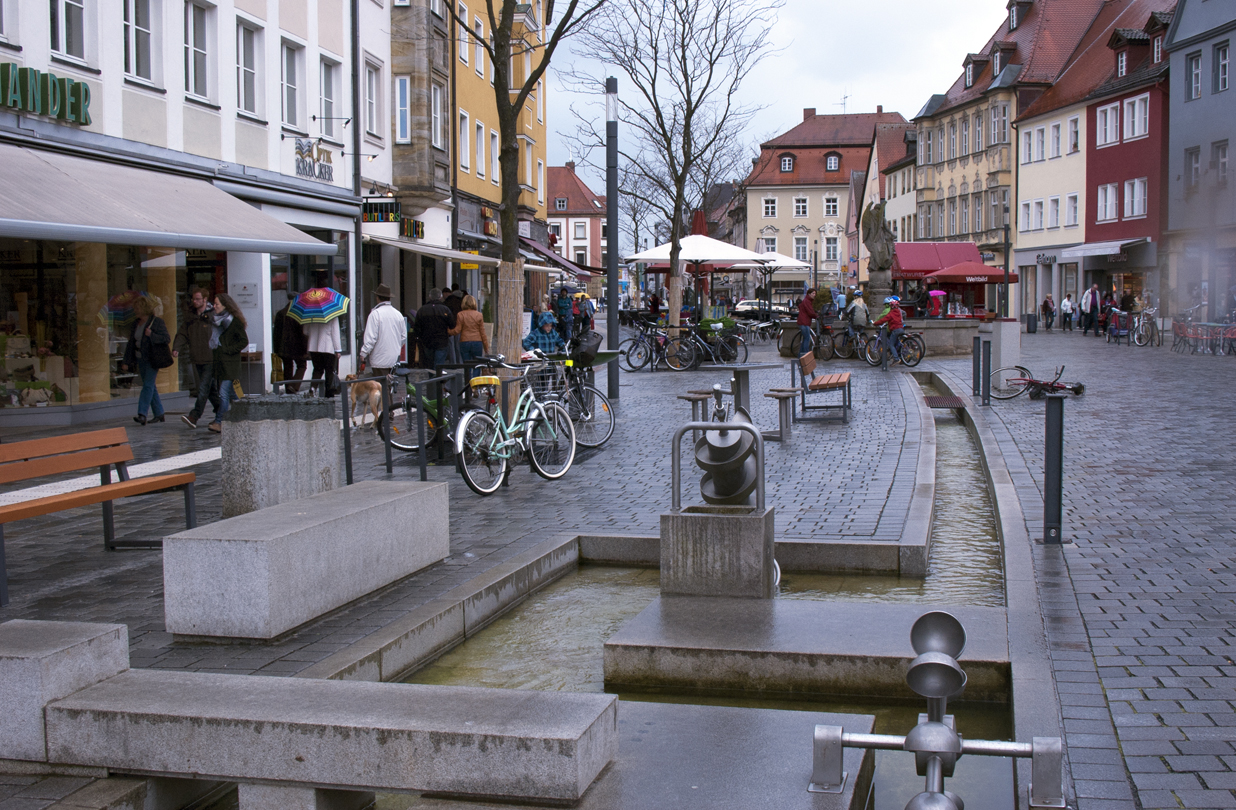
I stopped for lunch at a traditional Franconian place. The beer was acceptable, but not nearly as good as the beer in my neighborhood back home in Bamberg. However, the service and cheese spatzle (Franconian mac and cheese) was excellent!
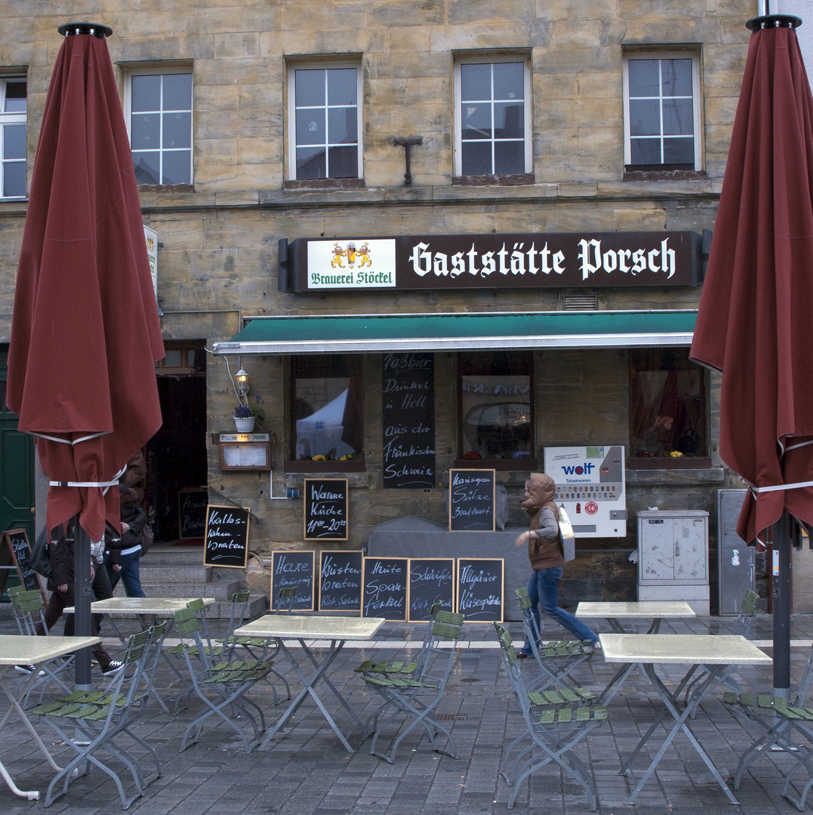
Back underway. A sign on a snack kiosk around the corner kinda scared me until I figured out it was broken:
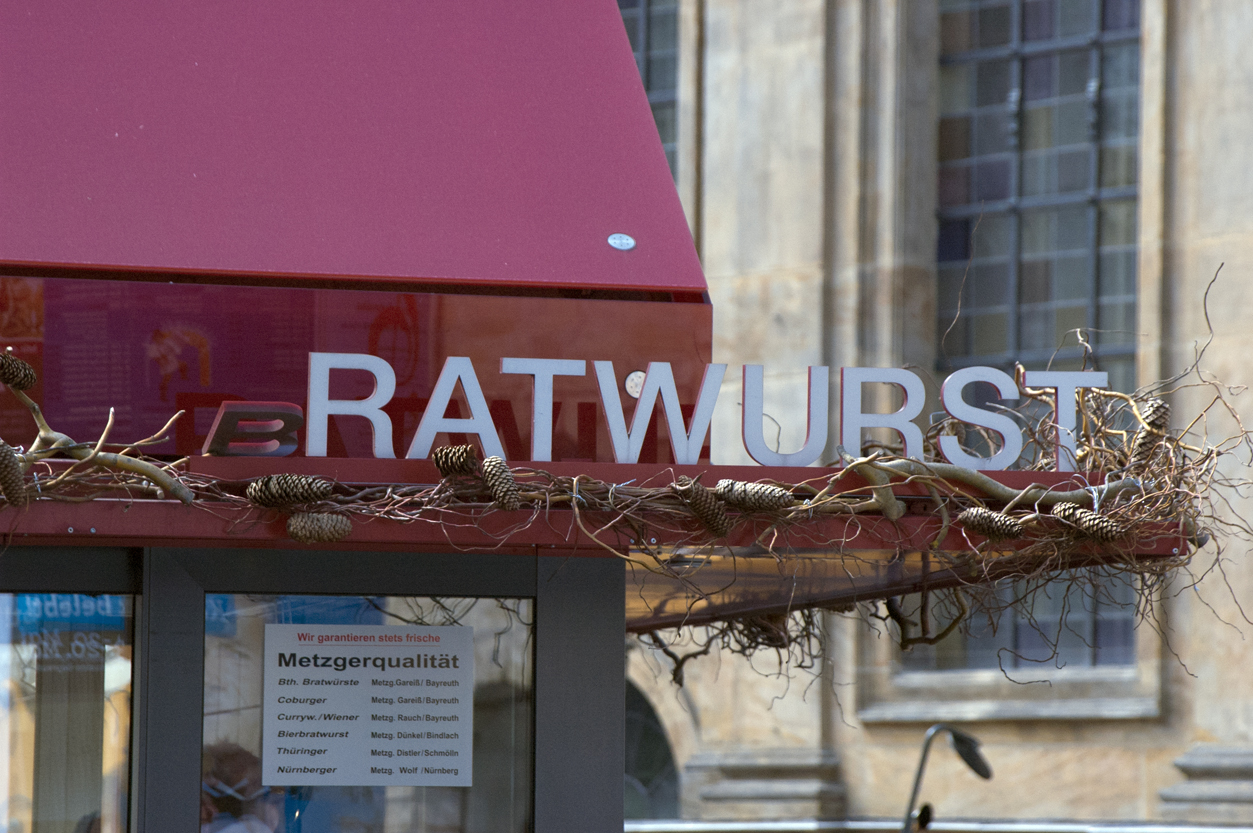
Note: each town has its own sausage recipe and style, just like beer, cheese and even bread. Here, you can see the kiosk serves famous sausages (bratwurst) from Bayreuth, Coburg, Bad-Thuringen and Nuremberg. When you see them for sale 1, 2 or 3 each, it’s understood that they come on a crusty bread roll. And you’re not enjoying them authentically unless you put mustard from the pump on the kiosk ledge on them.
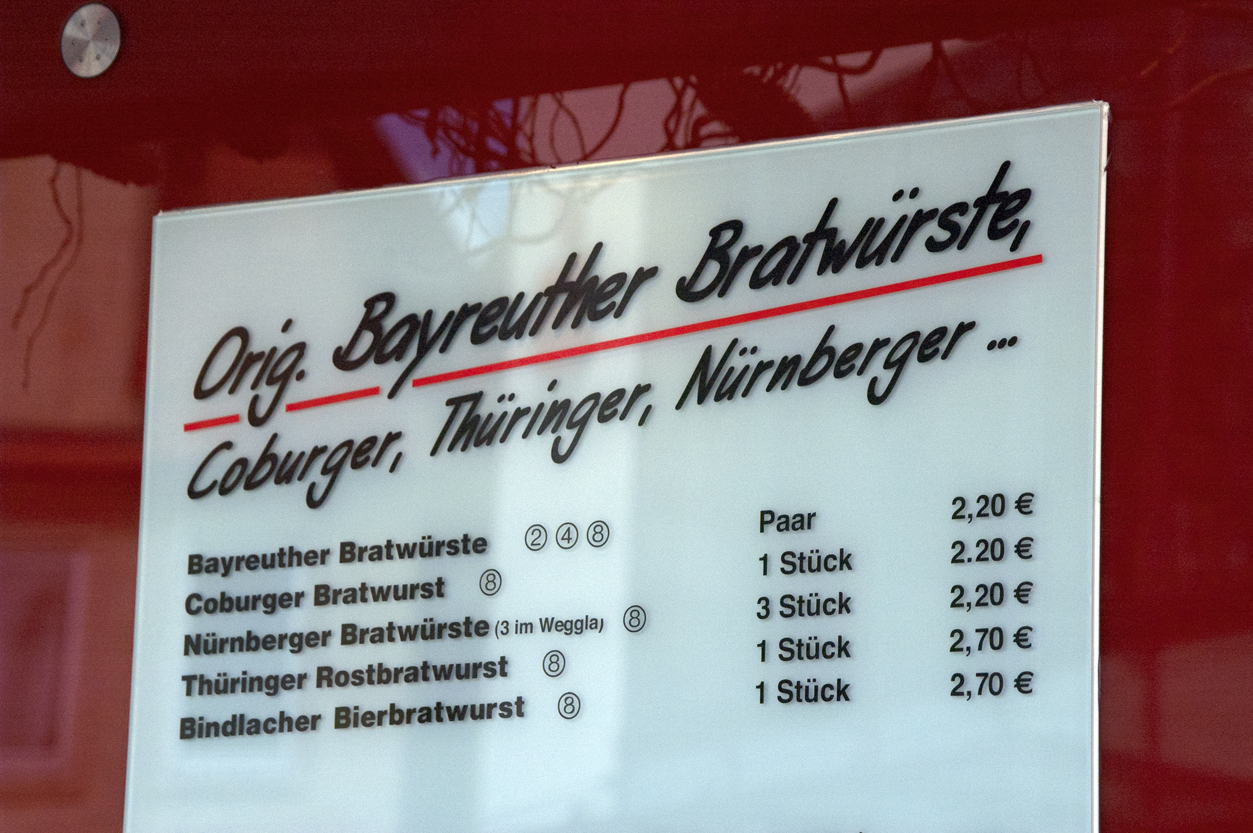
After lunch I set out to find Wagner’s house. I’d been there before, as I said, but it had been a long time. And the map I had turned out to be less than perfect. So, I got lost.
On my first trajectory away from the path I wanted to follow, I rounded a corner and saw this surprising shop:
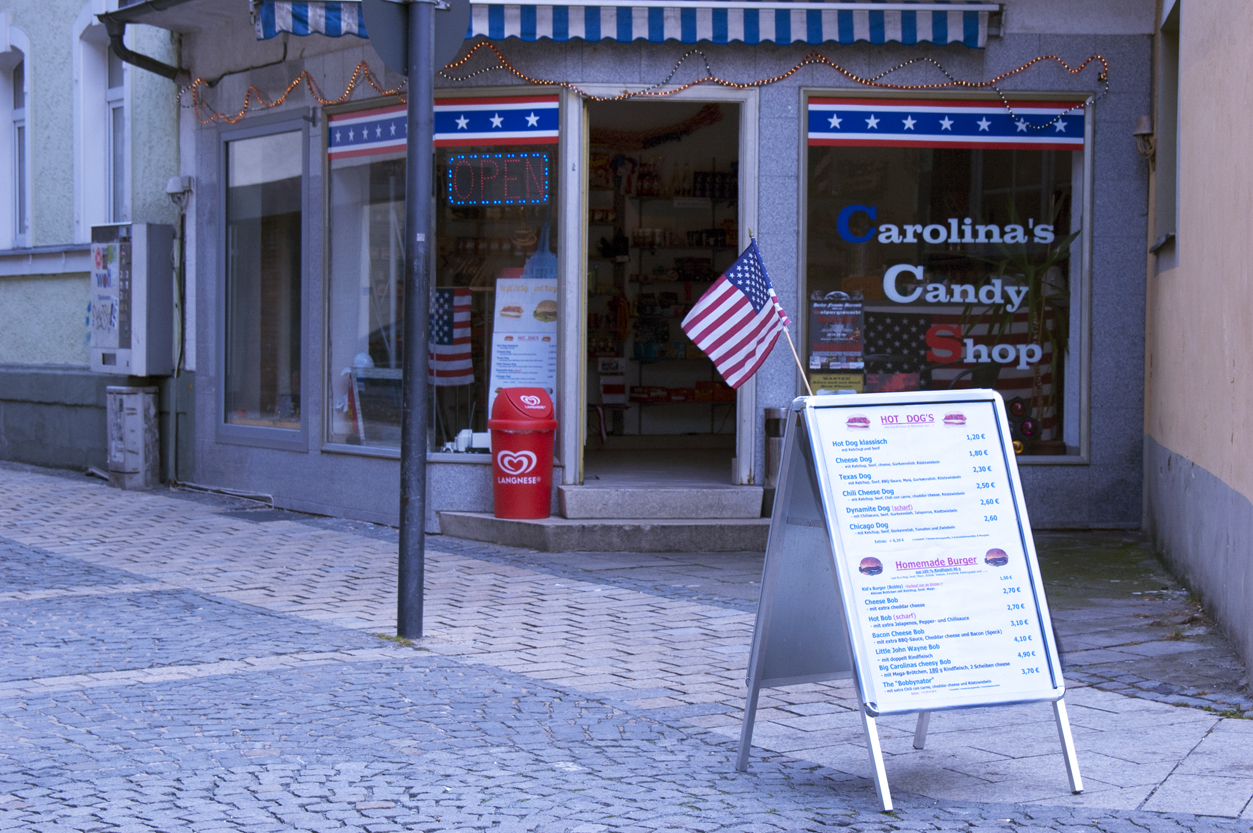
It was wide open and I poked my head inside, but no one was there. I did see the hotdogs and condiments. I didn’t see any candy, though. Hmmm…
It was about to rain, though, and I had limited hours for my daytrip, so I went on my way, trying to find the Wagner house.
On my second trajectory away from my second trajectory away from the path I wanted to follow, I saw this Mini coupe parked next to the sidewalk. I’d seen it online and in ads, but this was the first time I saw one in person. The logo on the side is an auto dealer:
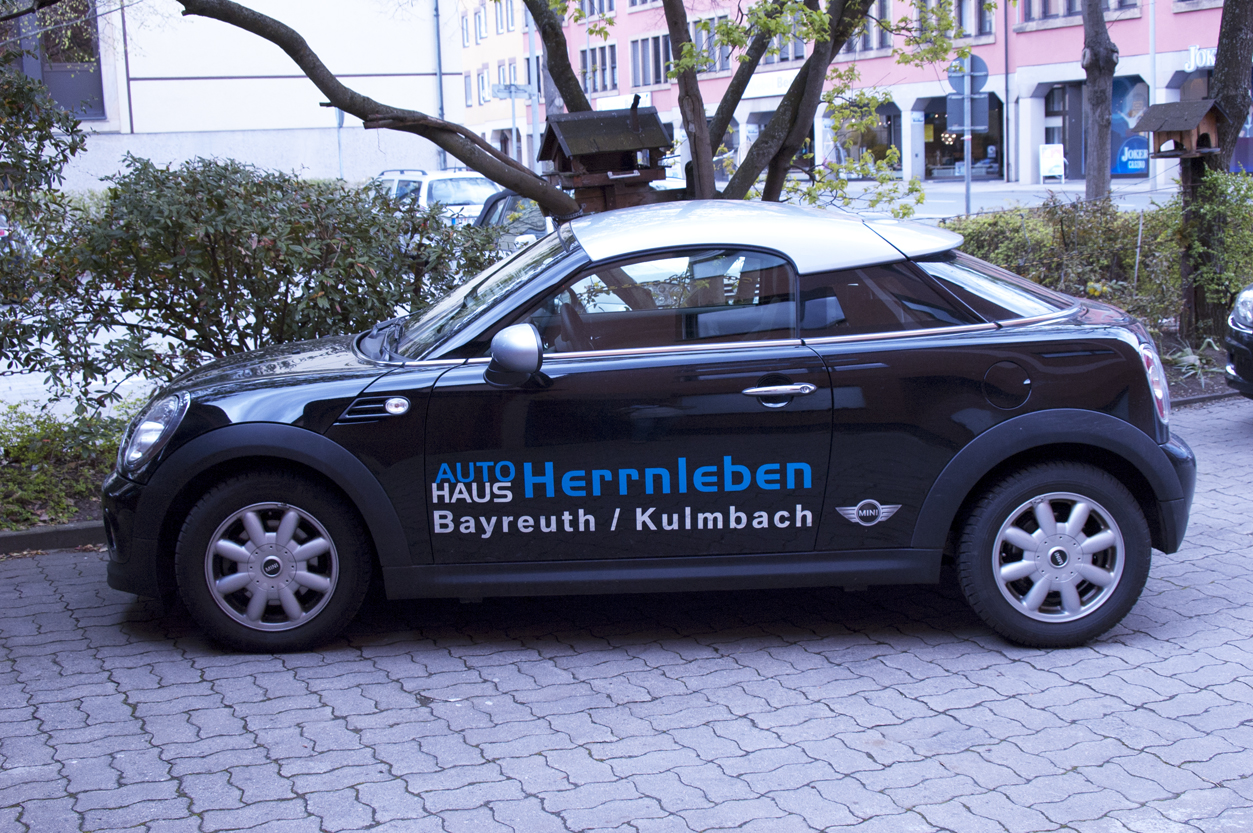
On my third trajectory away from the path I wanted to follow, or you could call it the return trip from the second trajectory, I saw this interesting door. I post it here for my friend Deb:
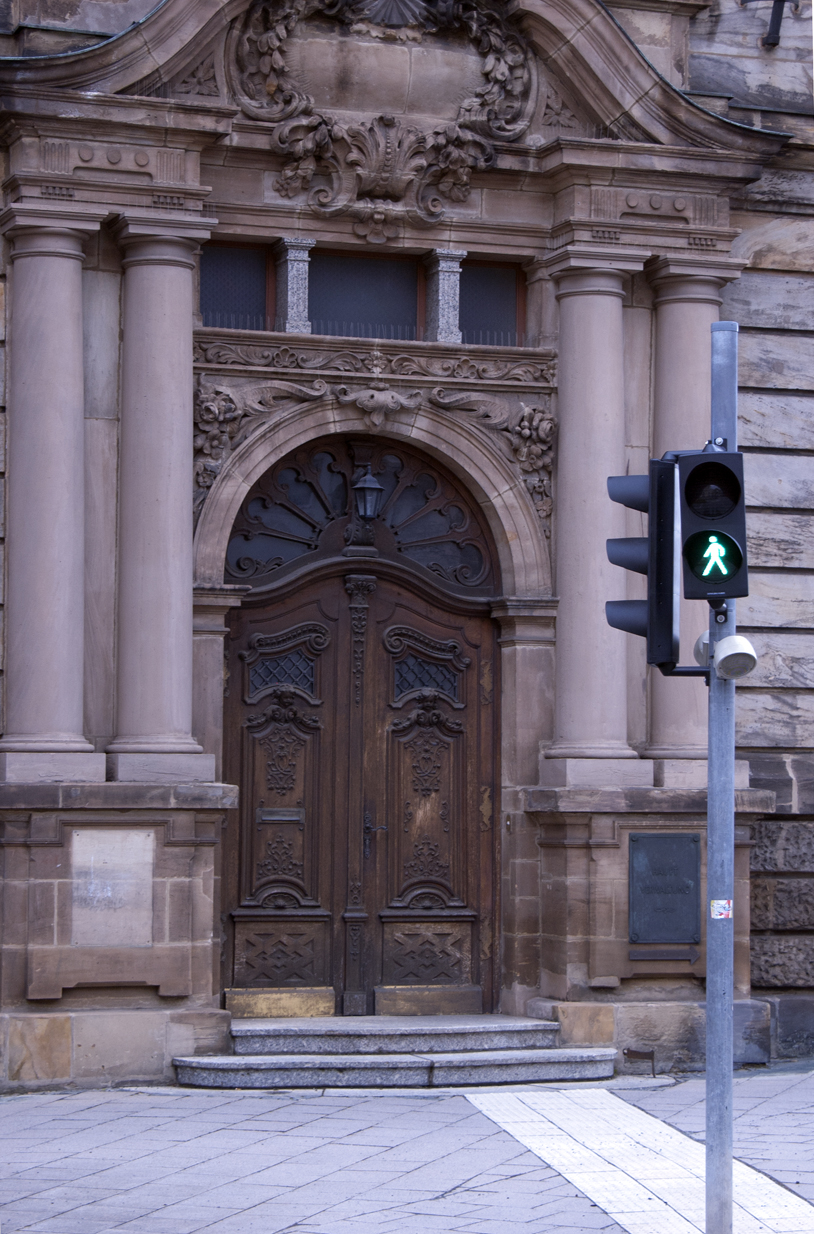
I like the little green man walking toward the door!
On the same second-and-a-half trajectory, I ended up outside the former city walls. Built into the wall was this building that housed a piano factory.

Across the street from the factory was a shop that sold, surprise-surprise, pianos. I liked their shingle. It reminded me of a violin shop I saw in Paris once with a violin shingle:

By this time I’d lost count of how many times I’d gotten off my intended path and decided that I didn’t care if I found Wagner’s house or not. I just set off in the general direction the map said it would be. About this time I saw a really interesting street that I took and also about this time it started to rain for reals.

Then, as I was still walking around not really knowing where I was, I saw a Woolworths! I remember seeing it 20-some years ago when I was there the first time. Aren’t all the Woolworths gone in the US?

Some cursory Internet research tells me that the Woolworth stores in the world today are actually part of an Australian company not related to the Woolworth company that used to exist in the US. The company was able to use the name because it was not trademarked in Australia at the time they decided to use it. There. Now you’re ready for Jeopardy.
When the rain let up just about the time I was sure I had walked to the next town, I got out my soggy, rain-splotched map to see where I was. I couldn’t make it out so I put it away. I looked up to see Wagner’s house!
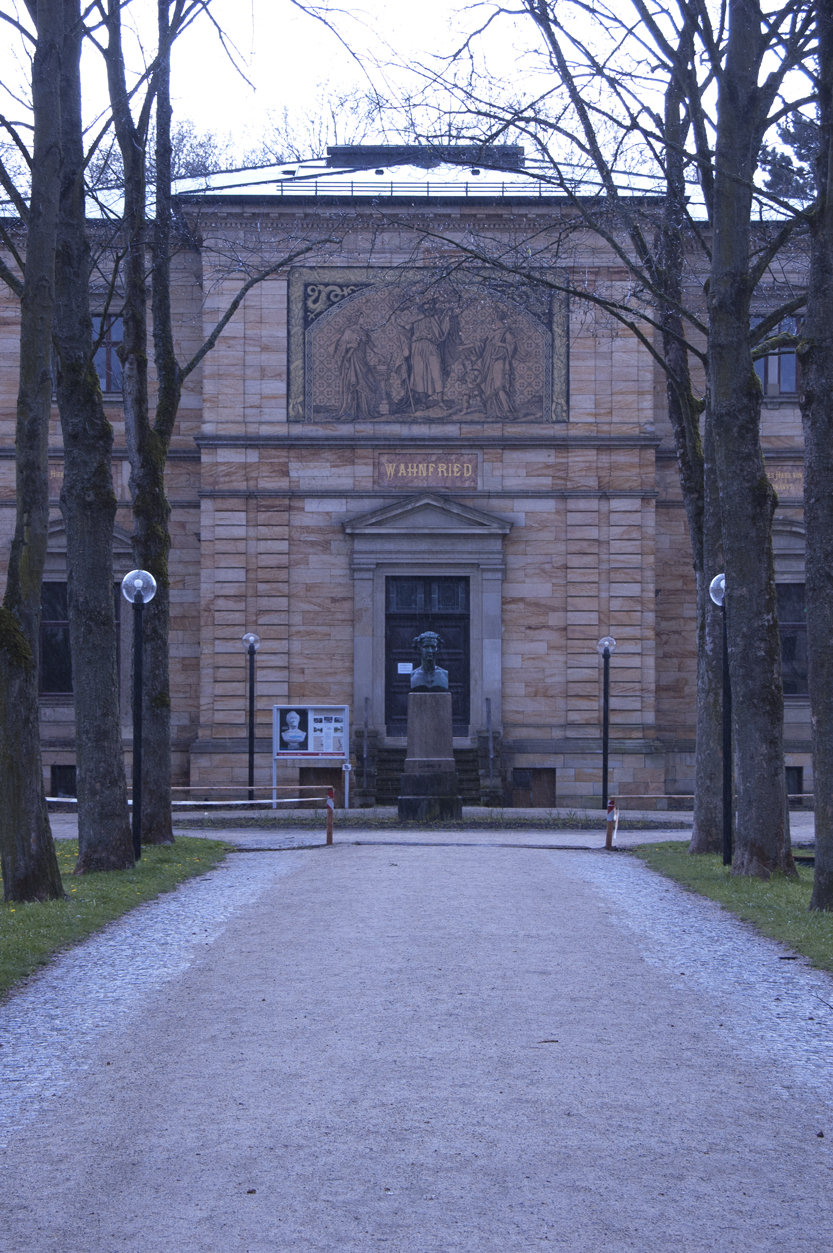
Unfortunately, the sign on the door said it had been closed in 2010 for renovations until further notice. Wouldn’t you think that the Bayreuth website would mention that??? Instead I had to discover the details on the Wager house website, which I didn’t check until after my trip. They are planning to reopen by Wagner’s 200th birthday in 2013, maybe before.
The grounds were all dug up for landscaping – except for the grave of Wagner and his wife in the backyard, thank goodness. That big, viney lump in the foreground is their gravesite:

But then, oh, but then! I exited the backyard right into the Hofgarten, which is the perfectly beautiful garden of the Margravine’s new residential palace. I remembered the fountain from my previous visit:
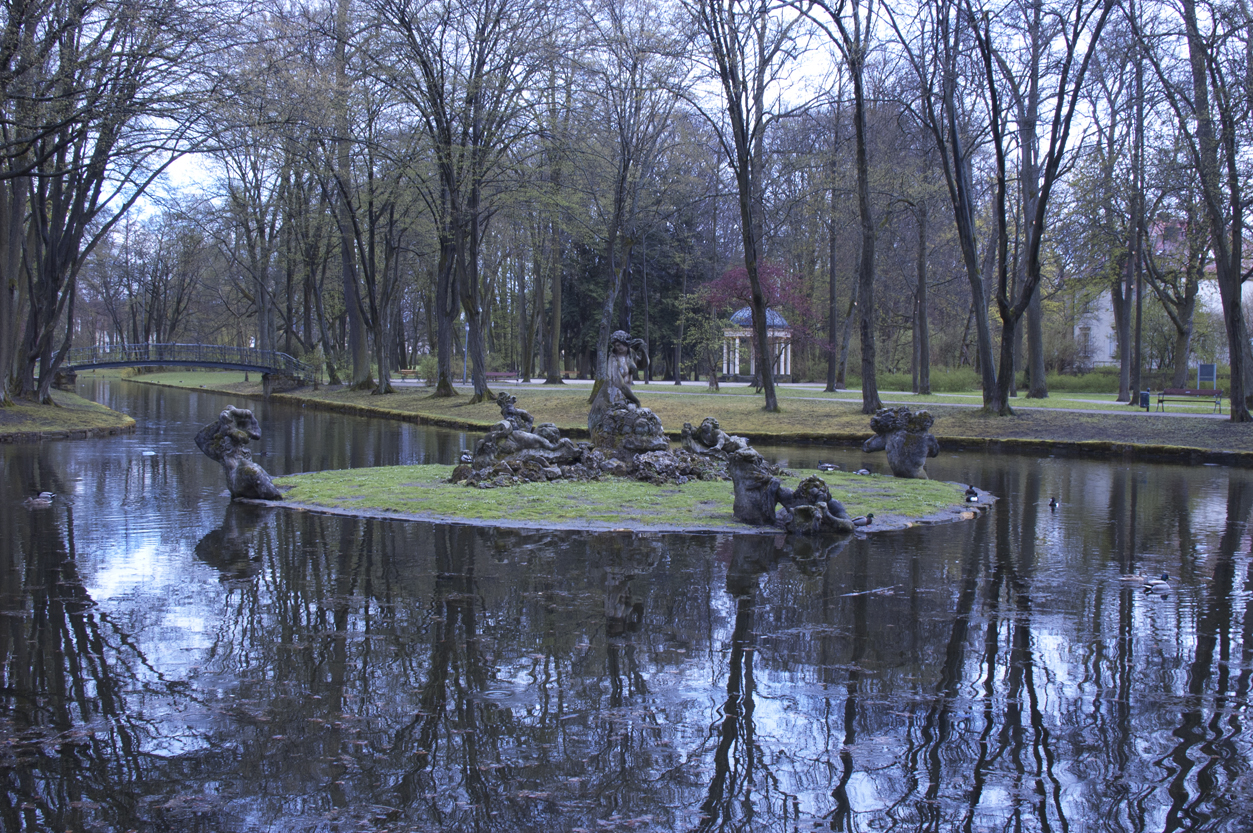
Even though it was rainy and overcast, the trees were mostly still bare, no flowers were blooming, and the fountain was off, this garden was still wonderful. It was worth the whole trip for me. It was peaceful and calm and I could imagine the Margravine and her husband strolling the well-designed pathways and footbridges. I spent a lot of time there.
I decided not to visit inside the palace but to visit instead the Bayreuth art museum, which was established only 10 years ago. Near it was a big church that I wanted to visit as well, while I still had a couple of hours til my train.
Well, I got lost a couple more times (next time I’m getting a better map!) but finally found the church. Hmm. But it was closed – the whole paved area all the way around the church was fenced off and dug up for renovation. That’s the danger of traveling in shoulder season. The tradeoff for cheaper prices is unpredictable weather and the chance that the sights are closed. So I put the church on my list of things to see when I come back.
Just a block away I finally found the art museum. Turns out it was just a few yards off the main street, around the corner from where I had lunch! Ah, well.

I went inside and shed my dripping jacket and closed my wet umbrella that was now broken from being turned inside out a couple of times by the wind. The museum cost only two Euros (about $2.65), which I thought was surprisingly cheap. Turns out, you get what you pay for.
The feature exhibit was work by Richard Lindner, a German-born artist who ended up in Boston. He died in 1978, so the work was fairly recent. Didn’t do much for me, though. It was very boob-centric and other female anatomy parts in a Monty Python kind of way. The samples on the Bayreuth museum website aren’t representative at all. I didn’t get it.
The rest of the exhibit was so-so. However, there was a part of the permanent collection I found interesting. It consisted of articles relating to the British American Tobacco company, which I had never heard of. Apparently there is a branch of this company near Bayreuth. There were historical documents and dried tobacco leaves, but the most interesting items to me were the carved pipes and snuff boxes. They had every imaginable form carved out of ivory stone and meerschaum.
They had made me leave my camera at the front desk, so I can’t show you any pictures, but I did notice a warehouse with the British American Tobacco company logo on it as the train took me home. I managed a quick, blurry shot:
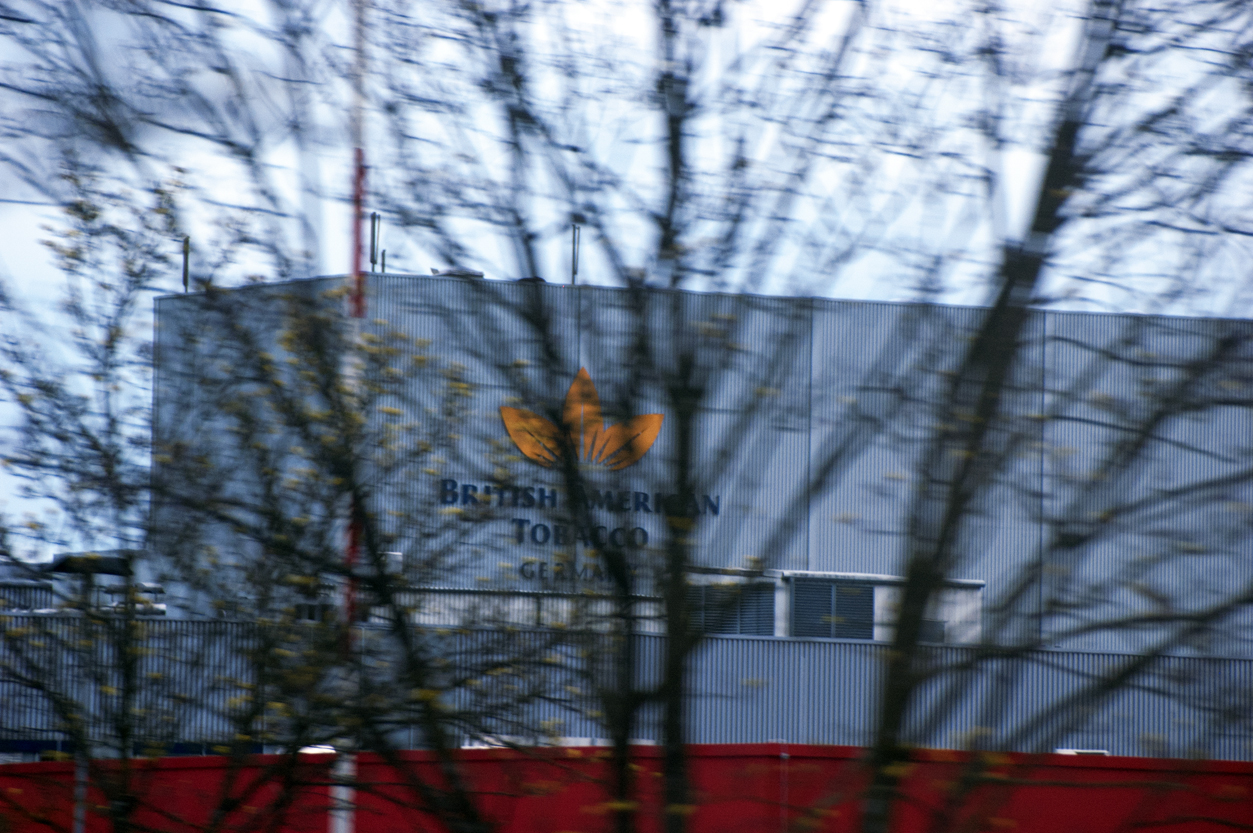
Now for the best sight of the day. I walked the few blocks from the art museum to the Margravian opera house. Here’s the front, which is nice, but not really a standout among all the historical buildings there:
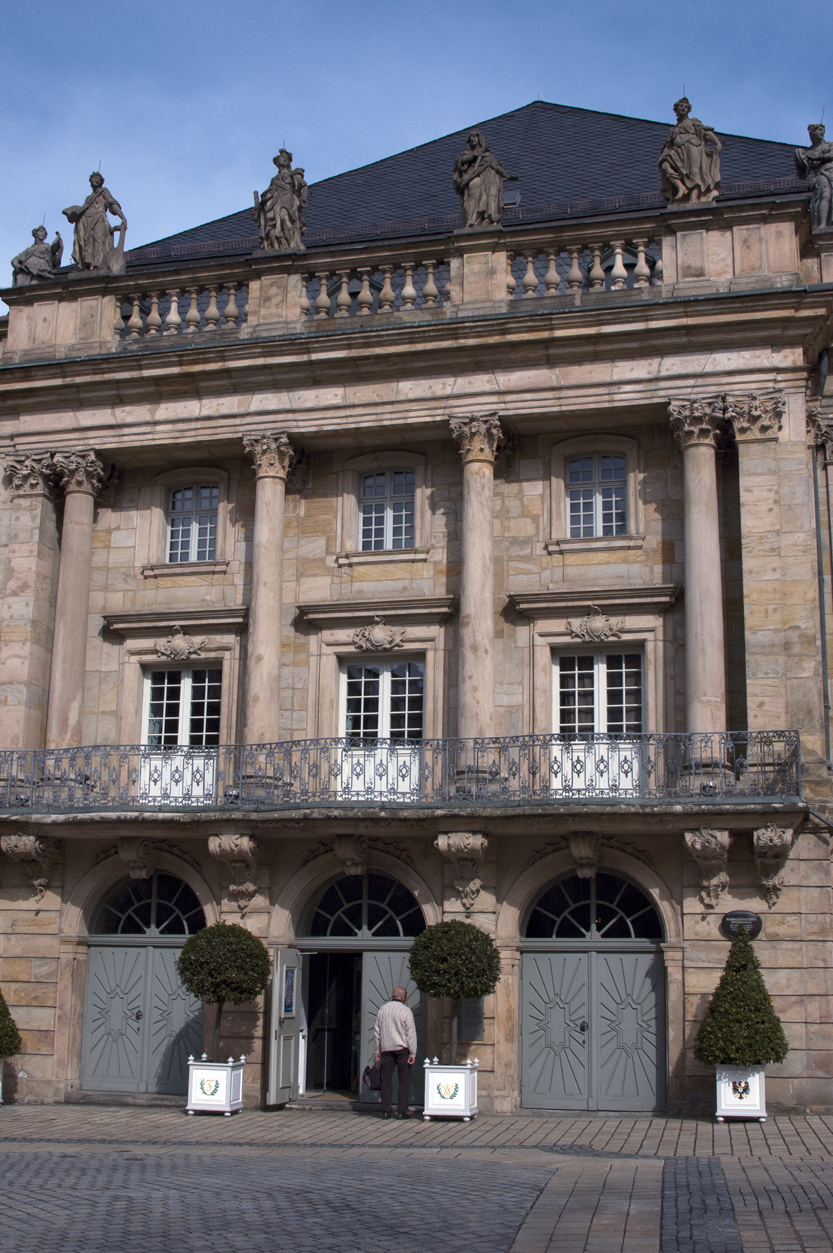
I went in and bought my ticket. The man there asked if I was from England when he heard my German, but wasn’t phased when I said I was American. He handed me a laminated information sheet in English. He was a very tall, older and really kind man who spoke excellent English, too. I told him I’d been there 25 years before and wanted to come back to visit again because it was so beautiful.
I asked him if photos were allowed. He said, “Technically, no, but we won’t see anything.” Awesome. So I stepped inside one of the most beautiful structures I’ve ever visited! My technically illicit photos could never do justice to this place. Here is the balcony, or loge, where the Margrave and Margravine would watch the performances from the back of the theater area:

The marble is actually faux-painted wood. But, yes, that’s real gold. Here’s the emblem above the stage:

Here’s a shot of the stage itself. They have it decorated with faux (cardboard or plywood) curtains and pillars:
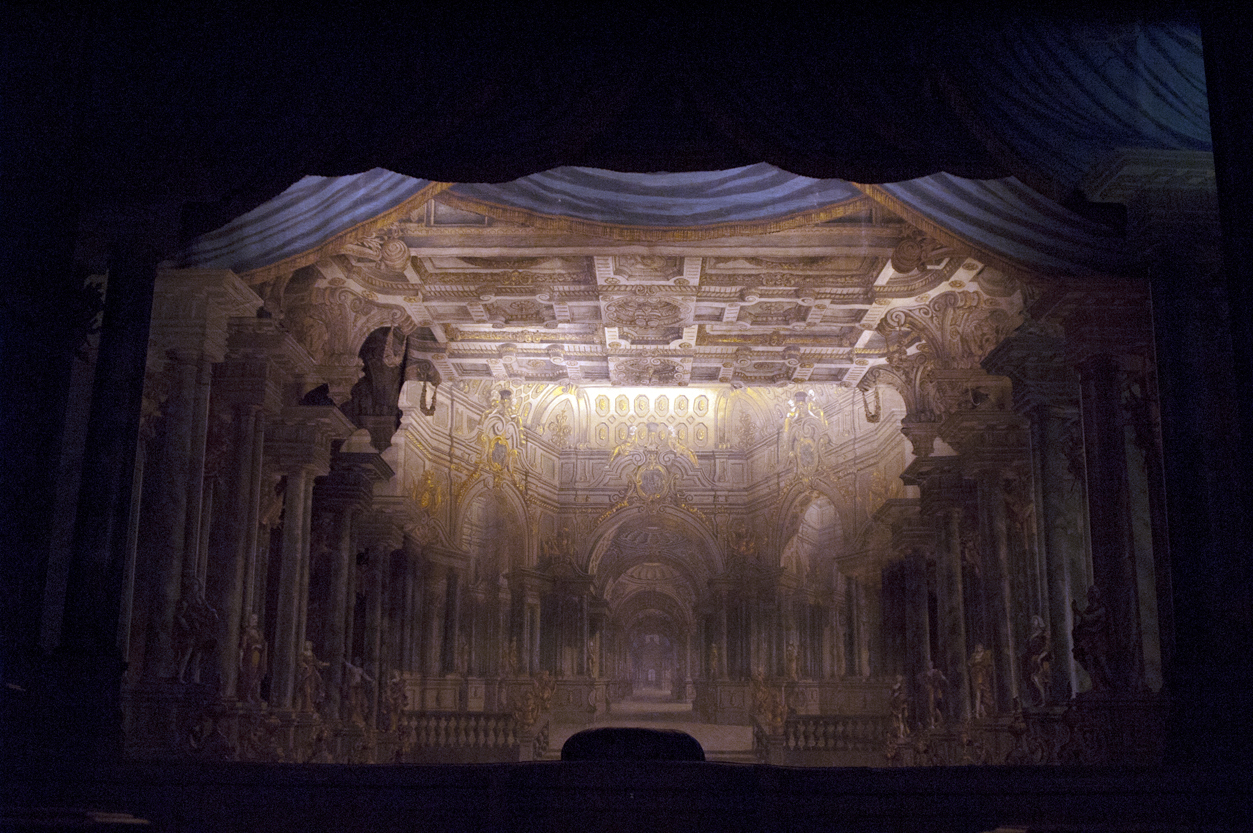
I urge you to visit the website of the Bavarian Department of Palaces, Castles and Gardens for better photos and some history plus a painting of Wilhelmine. Isn’t it cool that there’s a Bavarian Department of Palaces, Castles and Gardens?
I spent a lot of time in there, just looking. I did more photos but none really look as wonderful as the opera house itself. When I finally emerged from that stunning haven, the kindly man asked if it had changed in 25 years. I told him it had gotten even more beautiful.
I bought a book about the opera house and was gratified to discover the official photos of the interior don’t measure up to the real thing either.
After that I had about 45 minutes until my train, so I stopped across the street for a latte:
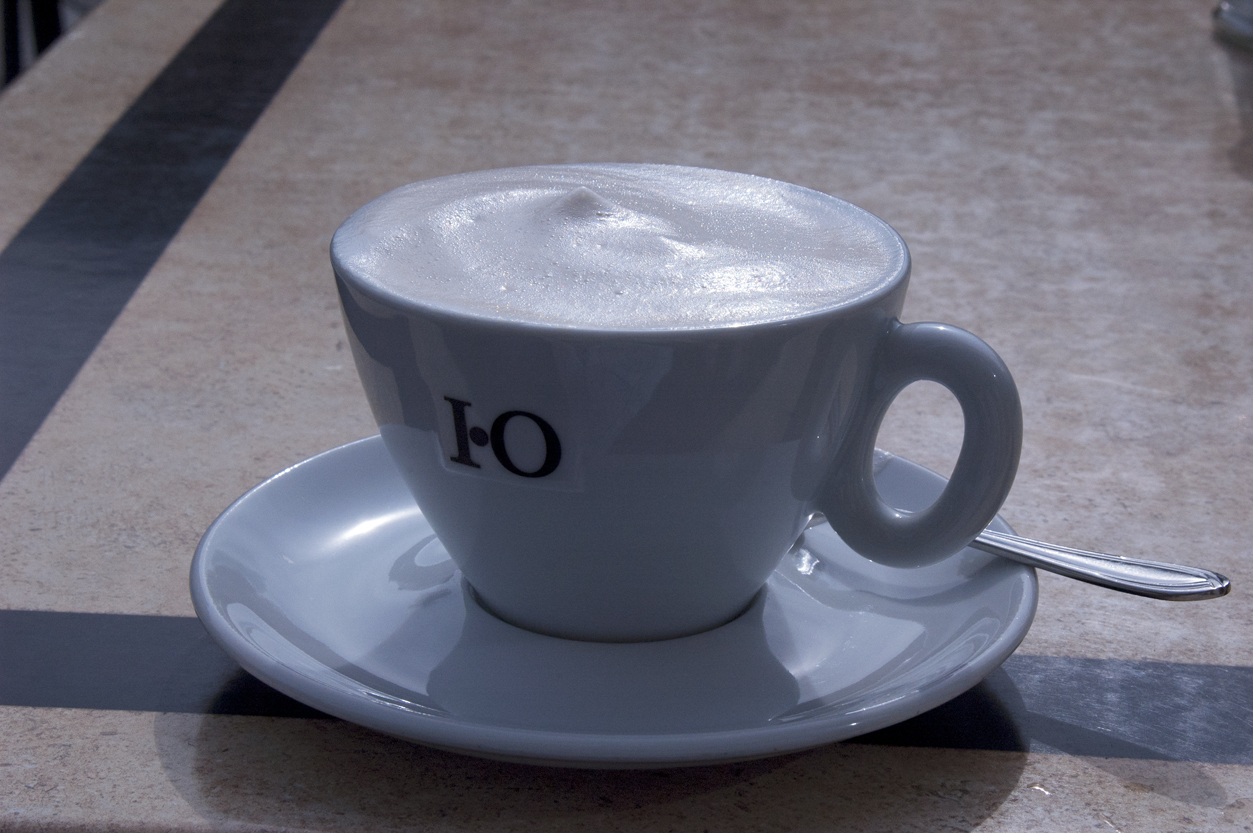
To get to the cafe, I had to cross a footbridge over a canal. In the canal itself was a series of metal sculptures on concrete pedestals. Art is just everywhere in Bayreuth.

On my way back to the train station, I saw this bank of pansies I thought some of you would enjoy:

At the station itself, I discovered evidence that writing “Wash me” in the dust on vehicles is apparently a worldwide phenomenon:
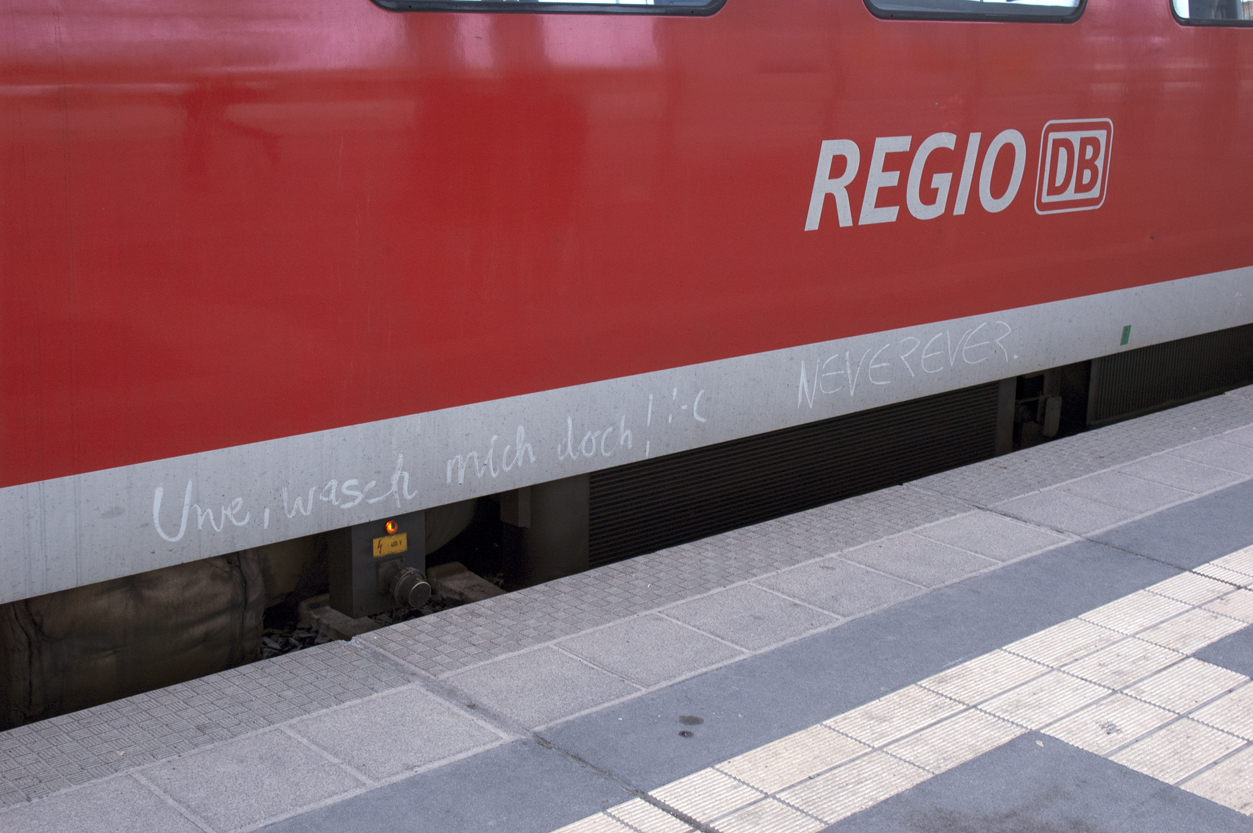
While waiting on the platform, I saw this comical billboard advertising beer (what else?):
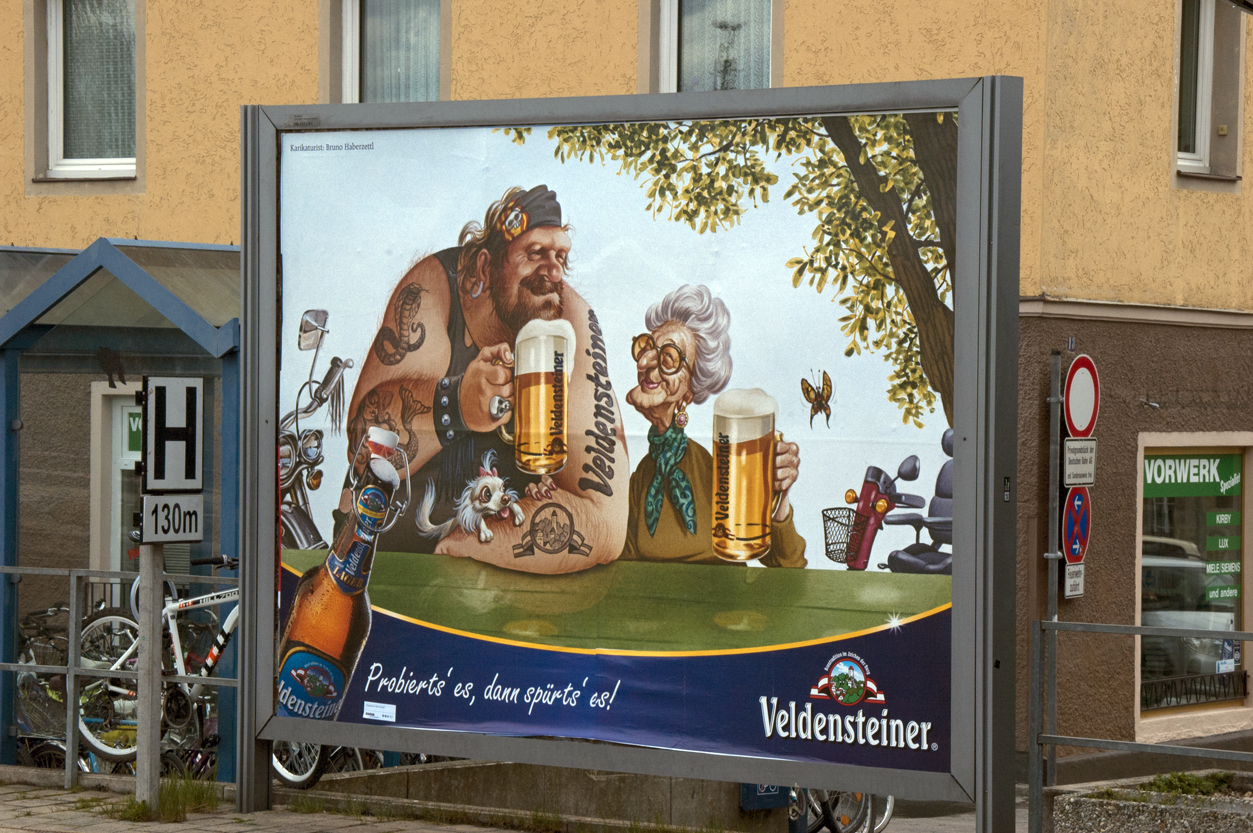
As a literal parting shot, I took this photo of Wagner’s opera house on the hill overlooking the town. I didn’t have time to get there this time, but next time!

So, that’s my day in Bayreuth. Overall, I think I didn’t see more than I saw. Certainly I didn’t get to all the places I’d planned for one reason or another. But I’m going back for the big church, Wagner’s and Liszt’s houses, Wagner’s opera house and the Margravine’s new residential palace. I also want to learn more about Margravine Wilhlelmine and to maybe visit that piano shop.
The trip home was uneventful but pleasant and I spent the time reading the book I’d bought at the opera house. Of course you’ll get the full story from the next outing!
Photo for No Apparent Reason:
